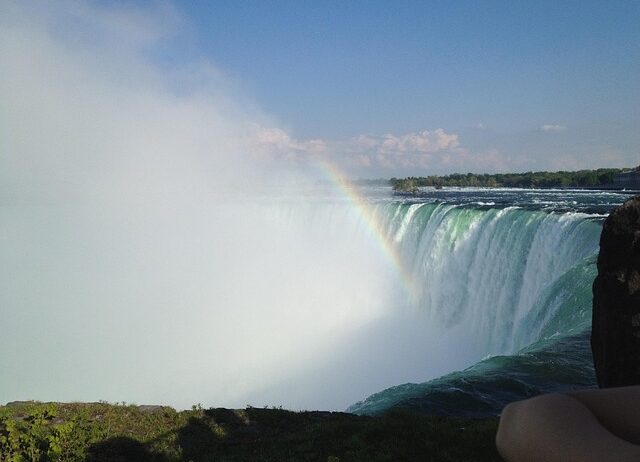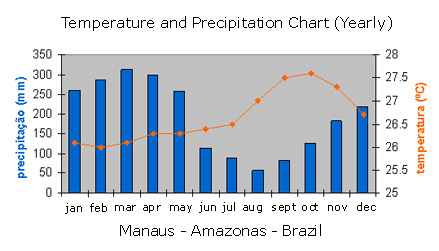Niagara Falls, a natural wonder straddling the border of Canada and the United States, is not only celebrated for its breathtaking beauty but also for the distinct climate that envelops its surroundings. The microclimate created by the colossal waterfall contributes to a unique atmospheric experience, enhancing the region’s diverse ecology. This article explores the climatic conditions of Niagara Falls, with particular emphasis on the waterfall mist phenomenon and the seasonal changes that shape its environment.
At the onset, it is crucial to understand the geographical context of Niagara Falls. Nestled in the northeastern United States, the region experiences a transcontinental climate characterized by four distinct seasons. Its proximity to the Great Lakes and the prevailing westerly winds from the Atlantic Ocean play a significant role in modulating local weather patterns. Consequently, the juxtaposition of a humid continental climate with the effects of the waterfall creates an array of atmospheric conditions, substantially impacting flora and fauna surrounding the falls.
During the spring months, temperatures in Niagara Falls begin to rise, fostering a resurgence of life after the long winter. Generally, daytime temperatures can reach the mid-50s to mid-60s Fahrenheit in March, while April and May see averages climbing into the mid-60s to mid-70s. This transitional phase witnesses the awakening of vibrant colors as trees return to life, flowers blossom, and the region’s natural beauty is reinvigorated. The meltwater from surrounding snowpack contributes to the increased flow of the Niagara River, rendering the falls a magnificent spectacle.
Simultaneously, the waterfall mist starts to envelop the area, creating an ethereal ambiance. As the falling water collides with the river below, it generates fine droplets that can ascend several feet into the air. This mist carries with it crucial moisture that fosters a unique microhabitat, allowing for the proliferation of specific species, such as ferns and mosses, that thrive in moist environments. The presence of mist also contributes to the area’s biodiversity, nurturing various ecosystems that rely on elevated humidity levels.
As spring transitions into summer, Niagara Falls experiences its warmest months, typically from June to August. Daytime temperatures often soar above 80 degrees Fahrenheit, with peaks occasionally reaching into the 90s. The increased warmth coupled with heightened humidity results in a lush landscape, attracting both tourists and wildlife. The falls serve as a magnet for visitors, who flock to witness the majestic plunges of water amidst the summertime haze.
During this peak tourist season, the mist generated by the falls becomes an essential feature. Visitors enjoy the cooling effects of the moisture-laden air, providing respite from the sweltering heat. However, the high humidity levels can also contribute to sporadic thunderstorms, typical of the season. These weather events bring much-needed rainfall, which in turn nourishes the surrounding ecosystem and maintains the vitality of the falls.
As summer wanes and autumn approaches, the climatic conditions begin to shift. This season, often characterized by cool afternoons and brisk evenings, sees temperatures averaging from the upper 50s to the mid-70s. Autumn in Niagara Falls is renowned for its vibrant foliage, with the leaves of surrounding trees transitioning into mesmerizing hues of red, orange, and yellow. The crisp air invigorates the region, attracting nature enthusiasts eager to witness the fall foliage against the dramatic backdrop of the waterfall.
As the air turns cooler and the days shorten, the mist produced by the falls persists, often creating stunning visual effects. The interaction of the warm mist with cooler temperatures can lead to the formation of ephemeral rainbows, enchanting visitors during this picturesque season. It is during autumn that the climatic interplay between the water and air serves to highlight the unique beauty of Niagara Falls.
Winter brings with it a stark transformation. The temperatures plummet, often diving into the low 30s or even colder, creating an icy spectacle. The waterfall mist evolves dramatically; some of it freezes upon contact, forming intricate ice sculptures that adorn the falls and the surroundings. This phenomenon creates a surreal winter landscape, attracting photographers and travelers alike, all eager to capture the beauty of nature’s artistry.
Despite the chill, the mist still plays a vital role during the winter months. The moisture in the air can contribute to localized snowfall, further enriching the region’s environmental tapestry. Many species hibernate or adapt to the colder weather, but some life persists, illustrating nature’s resilience. The cumulative effects of all seasons—spring’s rejuvenation, summer’s exuberance, autumn’s vibrance, and winter’s stillness—interweave to establish a dynamic ecological framework around the falls.
In conclusion, the climate surrounding Niagara Falls is a sophisticated interplay of natural forces that manifest through seasonal changes. The waterfall mist, in particular, is not merely a transient phenomenon, but a vital component of this ecosystem. It fosters diversity, shapes the landscape, and enhances the overall experience of this stunning locale. Understanding the climatic conditions of Niagara Falls enriches one’s appreciation of its grandeur, highlighting the necessity of preserving such natural treasures amidst the challenges posed by climate change.








